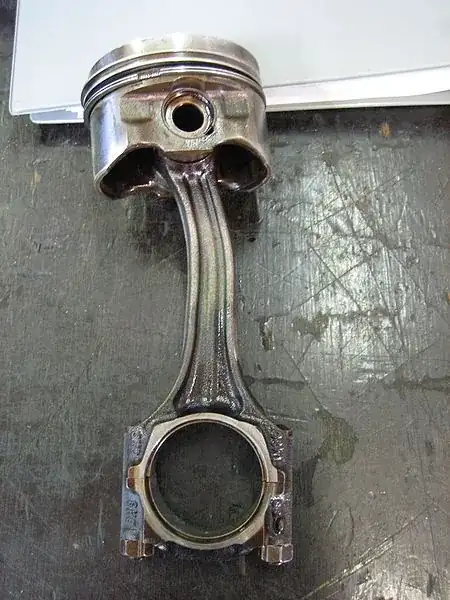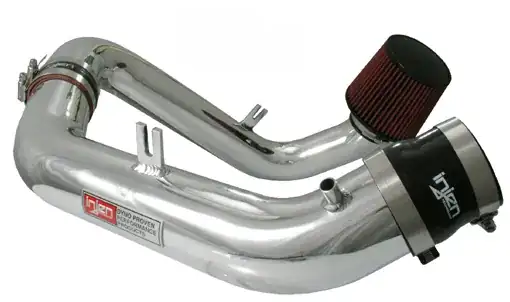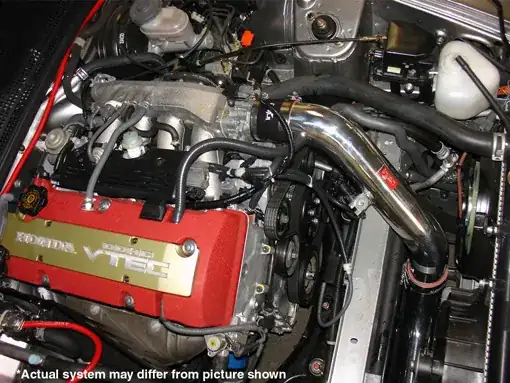tl;dr: your car will be more vulnerable to hydrolock. Don't use full throttle in deep puddles. In the rain, you should be fine in most situations. All that said, you'll still be able to ruin your car if you try hard enough.
If you submerge a running car in water, it's going to damage the engine, cold-air intake or not. One of the worst possible scenarios is hydrolock. From Wikipedia:
Hydrolock occurs when a volume of liquid greater than the volume of
the cylinder at its minimum (end of the piston's stroke) enters the
cylinder. Since most common liquids are incompressible the piston
cannot complete its travel; either the engine must stop rotating or a
mechanical failure must occur.
Among other things, this can lead to catastrophic damage to engine internals. For example, here's what a tragically compressed connecting rod looks like:

The cold-air intake does one or both of the following:
- It moves the air intake point to one far away from the hot engine bay. This is often down inside a wheel well.
- It provides a smooth path for the air to move from the primary opening to the intake manifold with minimal turbulence or loss along the way.
Remember also that your engine is an air pump. A normally aspirated engine can create a vacuum at its primary intake point that approaches a negative atmosphere (relative to base atmospheric pressure). That means that you'll see approximately 15 psi of suction across that air intake's cross section.
This gets more exciting with a forced induction car. My car can easily generate an additional atmosphere of boost. That means that my intake is seeing 30+ psi.
So, considering the weight of water is one gram per cubic centimeter, it sure does seem like it wouldn't be hard to slurp up enough water to fill every cylinder simultaneously (my 2000 cc engine would hold about four pounds of water).
Now, a reality check: all of the above assumes full throttle and a smooth pipe-based intake that is fully submerged. What can you do to avoid damage?
- Don't use full throttle in deep puddles. If the engine is in a vacuum situation (i.e., closer to idle), it won't be sucking so hard on the straw.
- Don't use a cold-air intake. I don't but you can if you want. It's your car.
- Don't drive into super deep puddles / ponds / lakes. Maybe you shouldn't do this regardless.
- Keep your splash guard in place. That should rule out sudden high volume splashes of water right on the intake.
- Try an air bypass valve. There are a variety of vendors that sell a piece that goes in line with the intake that looks like a foam collar. It opens up when there's a severe vacuum in the lower intake (i.e., if it's trying to injest a bucket of water). The result is that the car continues to receive air and not water (until things get deep enough to cover that valve as well).
On the intake that you show in your picture, the air bypass valve would go right in place of the silicone collar that joins the two main sections.


